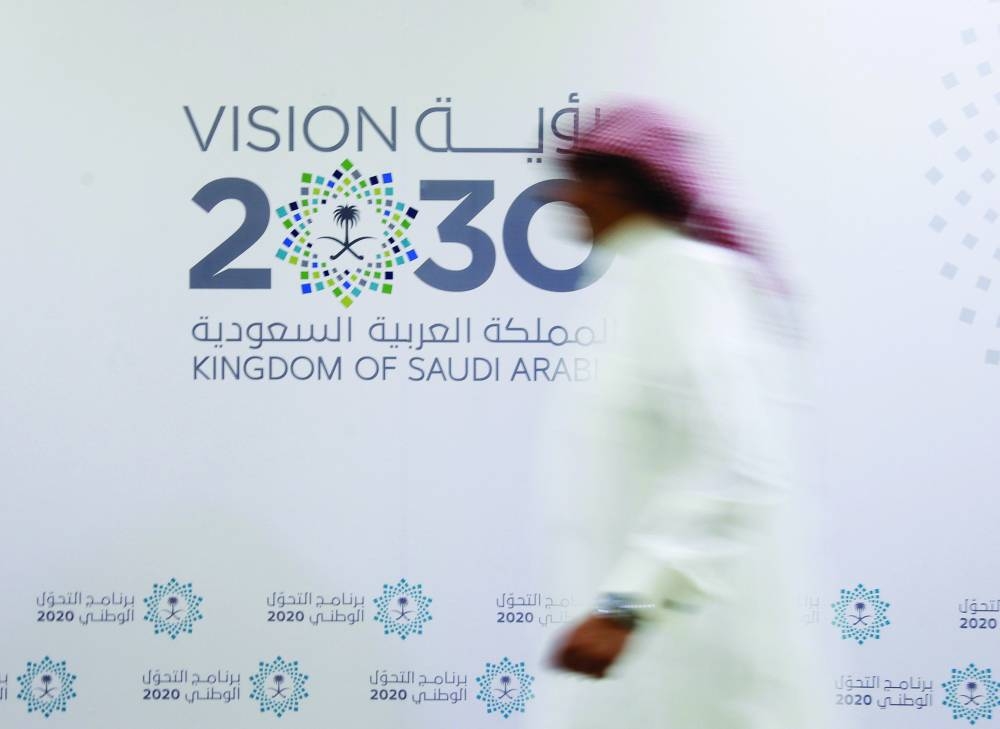Bloomberg/Riyadh
Saudi Arabia’s sovereign wealth fund is considering plans to accelerate debt sales or obtain bank loans as it hunts for new sources of cash to help pay for Crown Prince Mohamed bin Salman’s trillion-dollar economic transformation project.
The Public Investment Fund could also line up equity offerings in its portfolio companies as part of the push, according to people familiar with the matter. The moves come as the fund’s cash reserves have dropped to $15bn as of September — the lowest level since 2020, the earliest year for which data is available.
The PIF is the main entity tasked with driving Saudi Arabia’s Vision 2030 programme, an initiative that aims to diversify the oil-dependent economy. With the Saudi government predicting a deficit every year until 2026, there’s a sense of urgency at the fund to line up funding for its billions of dollars of spending commitments, the people said, asking not to be identified discussing non-public information.
It’s the latest sign that there are rising pressures forming in the kingdom’s effort to pull off the ambitious initiative that’s already been hampered by higher interest rates and a lack of significant foreign direct investment. Late last year, the government acknowledged for the first time that some projects could be delayed past 2030.
Representatives for the PIF declined to comment.
As it seeks to ramp up its fundraising efforts, the $940bn PIF is wary of draining too much liquidity from the local banking system, the people familiar with the matter said. Instead, the fund is pushing its subsidiaries to lean on dollar borrowing where possible, they said.
That would leave local banks, which have been struggling with rising borrowing costs, able to focus on financing for real estate projects in the kingdom.
The PIF is also planning to become a more regular issuer of bonds to help establish a yield curve for its units to use as a benchmark to price their own debt sales, the people familiar with the matter said. The fund will look to regularly tap debt markets for a few billion dollars at a time and at a variety of durations, they said.
The PIF has already issued two separate bonds this year that have helped it raise a total of $7bn.
“We do not think that the PIF will stop at $7bn,” Pascal Bode, a strategist at Morgan Stanley, said in a note to clients, citing “the fall in the PIF’s treasury assets and continued spending needs.”
Executives have also been laying the groundwork for more equity offerings of the fund’s portfolio firms through a unit responsible for its so-called capital recycling programme, the people familiar said. Combined, the PIF’s local holdings — including positions in Saudi Telecom Co, Saudi Arabian Mining Co and the Tadawul Group, the owner of the local bourse — are worth more than $170bn.
The PIF has been playing a major role in driving IPO activity in Saudi Arabia by offering up stakes in oil drillers ADES Holding and Arabian Drilling. It’s now readying Nupco, the country’s largest medical procurement firm, and Saudi Global Ports Co for share sales that could take place as soon as this year.
The effort to obtain more cash comes as total spending by the fund is set to top $70bn a year after 2025, up from current levels of about $40bn to $50bn a year, PIF Governor Yasir al-Rumayyan said last month.
That’s to help pay for projects that the kingdom has embarked on in recent years, including Neom — a $1.5tn development along the coast of the Red Sea.
The PIF is backing a $63bn project to turn a Unesco World Heritage site in Riyadh into a tourism destination, a separate plan to create resorts along the country’s coast, and spending tens of billions of dollars to help transform the kingdom into a global logistics centre and a manufacturing hub.
Chaired by Crown Prince Mohamed, the PIF gets its funding from borrowing, investment returns and transfers from the government.

A Saudi man walks past the logo of Vision 2030 in Jeddah (file). The PIF is the main entity tasked with driving Saudi Arabia’s Vision 2030 programme, an initiative that aims to diversify the oil-dependent economy.
